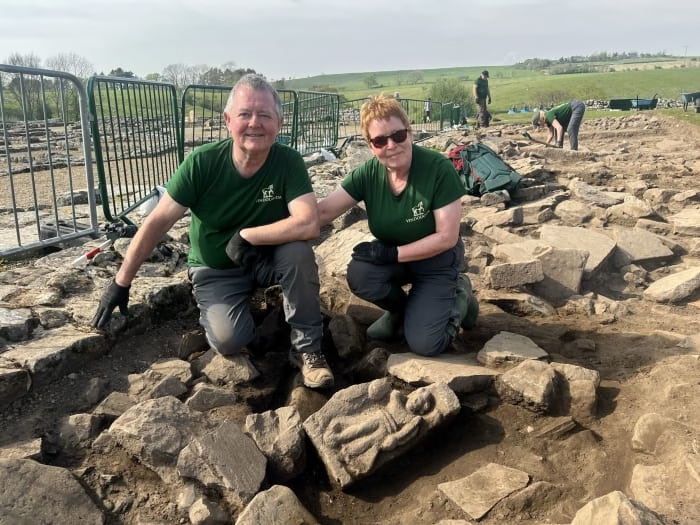Remarkable Archaeological Find at Vindolanda Fort Sheds Light on Roman Britain’s Military and Cultural Legacy
A rare 1,800-year-old Roman sandstone relief depicting Victoria, the goddess of Victory, has been unearthed near Hadrian’s Wall at the historic Vindolanda Roman fort in Northumberland, UK. This exceptional discovery offers fresh insight into the cultural symbolism and military history of Roman Britain.
Symbol of Triumph Unearthed at a Historic Site
Believed to date back to around AD 213, the intricately carved relief measures 47 cm in height, 28 cm in width, and 17 cm in depth. Experts suggest it may have originally adorned a monumental archway, possibly framing an inscribed panel celebrating victory and peace following the Severan military campaigns in Britain.
The relief was uncovered by long-time Vindolanda Trust volunteers Jim and Dilys Quinlan, who found the piece in a rubble layer above a former infantry barracks. The couple has been contributing to the excavations for over 21 years.
More Than Just a Fort: Cultural Significance Revealed
Victoria, the Roman counterpart of the Greek goddess Nike, was widely revered as a symbol of military success throughout the Roman Empire. Her depiction at this site holds special meaning, as the barracks beneath the relief were constructed shortly after the Severan campaigns ended—an era that reshaped the Roman frontier in Britain.

“Finds like this are increasingly rare in Roman Britain,” said Dr. Andrew Birley, Director of Excavations at the Vindolanda Trust. “This beautifully carved image is a powerful reminder that Roman forts were not merely military outposts, but places rich in culture and symbolism.”
Traces of Ancient Pigment Under Investigation
According to Barbara Birley, curator at the Vindolanda Trust, the relief may have originally been painted in vivid colors—a common practice in Roman stone carving. The artifact is currently being stored unwashed to allow for detailed analysis of any remaining pigment.
Verified by Experts, Headed for Exhibition
The identity of the goddess was confirmed by Professor Rob Collins, Head of Archaeology at Newcastle University, who authenticated the depiction of Victory.
The relief is expected to become a centerpiece of Vindolanda’s upcoming “Recent Finds” exhibition in early 2026, offering visitors a rare glimpse into the spiritual and artistic life of Roman soldiers stationed at Britain’s northern frontier.
Cover Image Credit: The Vindolanda Trust





